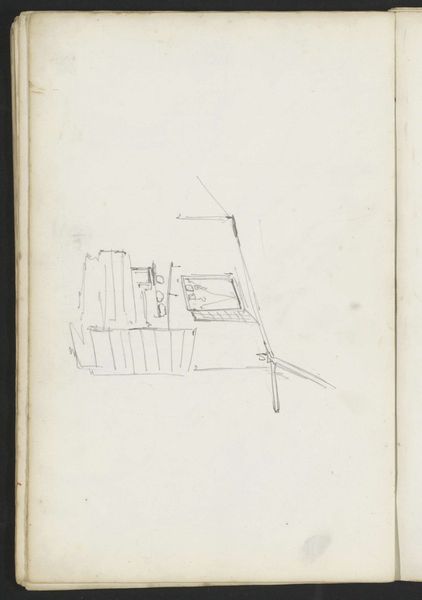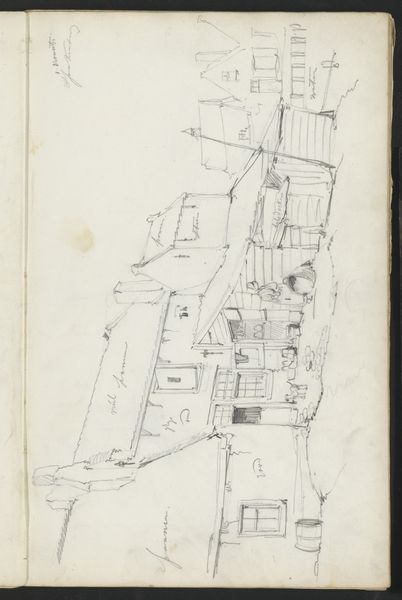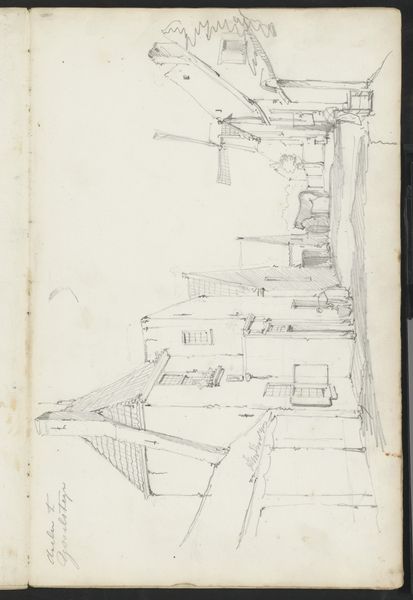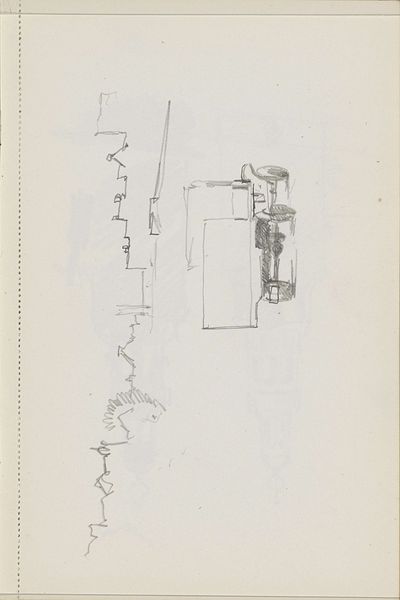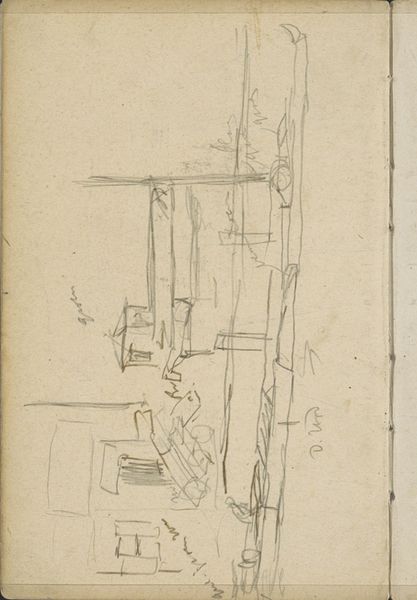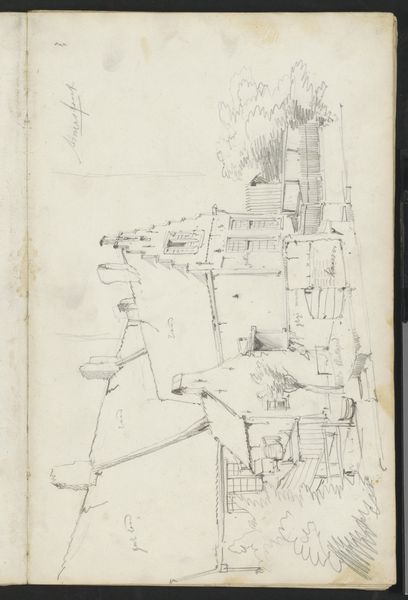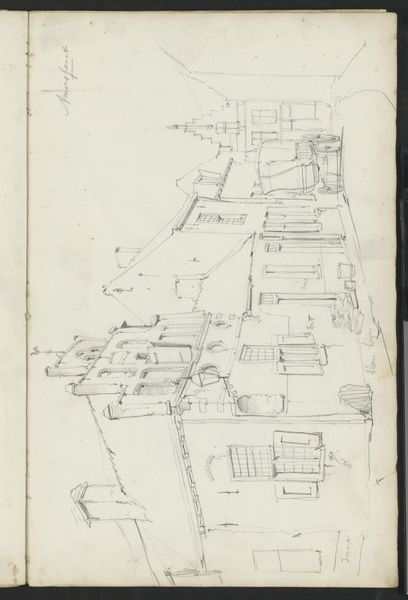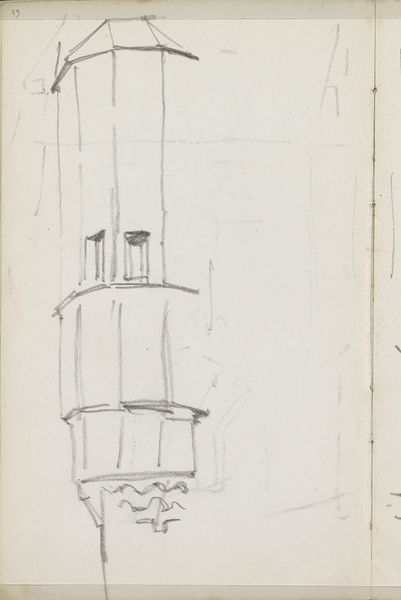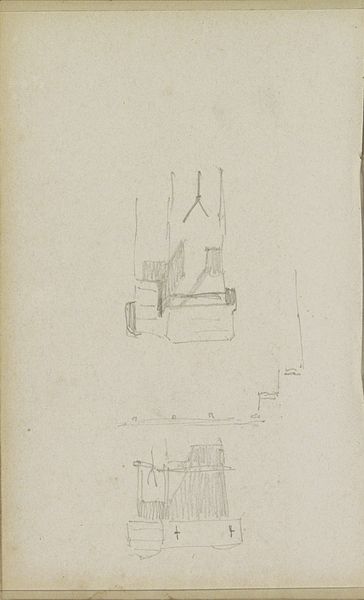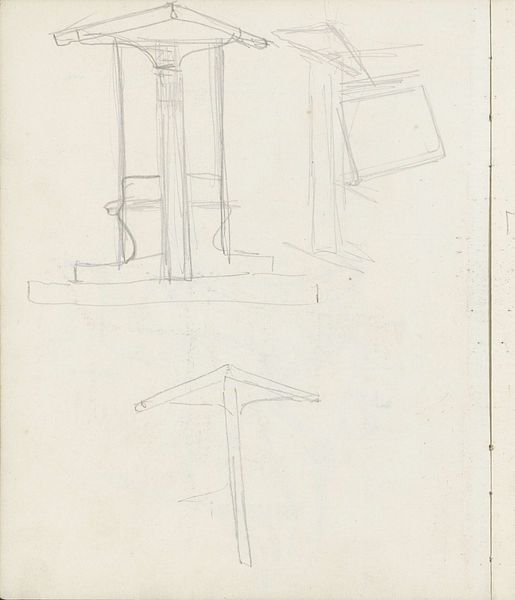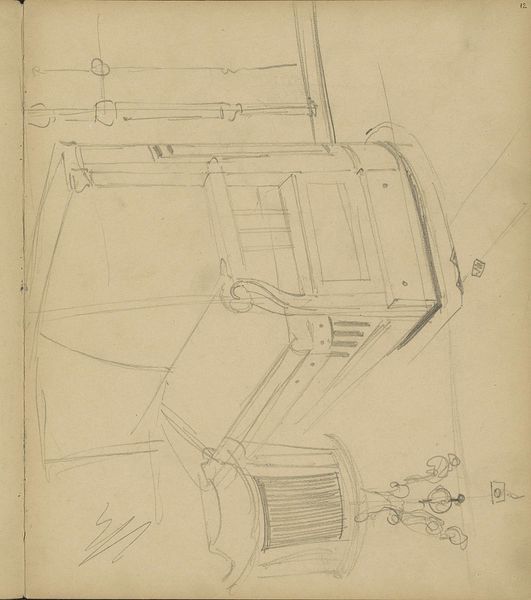
drawing, pencil
#
drawing
#
aged paper
#
quirky sketch
#
impressionism
#
sketch book
#
landscape
#
personal sketchbook
#
idea generation sketch
#
sketchwork
#
ink drawing experimentation
#
sketch
#
pencil
#
sketchbook drawing
#
storyboard and sketchbook work
#
sketchbook art
#
realism
Copyright: Rijks Museum: Open Domain
This sketch of the Waterpoort in Gorinchem, drawn by George Hendrik Breitner, captures more than just a physical structure; it echoes a lineage of symbolic gateways. The arch, a dominant motif, is one of civilization's most enduring visual symbols, seen as a passage between worlds, a triumphal entry, or a sacred threshold. Think of the Roman triumphal arches, adorned with victories, or the sacred arches in Renaissance paintings, framing divine revelations. In Breitner’s sketch, this arch is almost a psychological gateway, inviting the viewer to contemplate what lies beyond. The column too, has been used throughout history as a symbol of strength and stability. In ancient Greece, columns supported temples of worship and in the Roman Empire, were incorporated into the architectural language of their public buildings. They’re not merely structural; they represent the foundational values of societies. The presence of these symbols is not coincidental. They reflect a deep-seated human need for order, stability, and connection to our past, which Breitner’s sketch subtly evokes, linking the modern viewer to layers of historical and cultural consciousness.
Comments
No comments
Be the first to comment and join the conversation on the ultimate creative platform.
